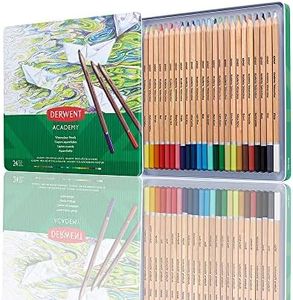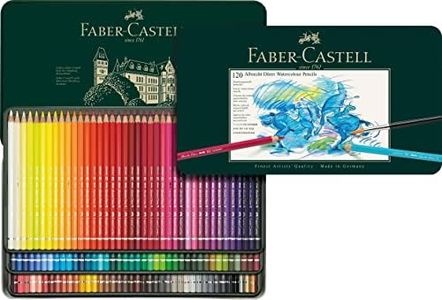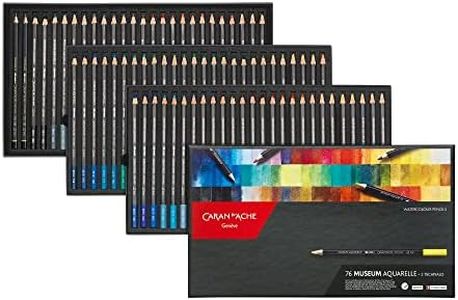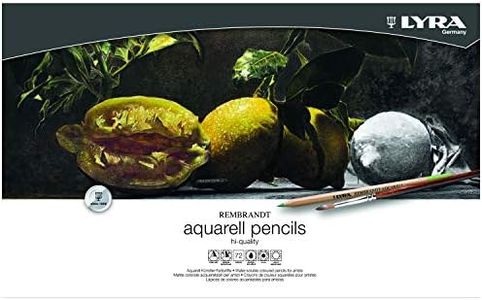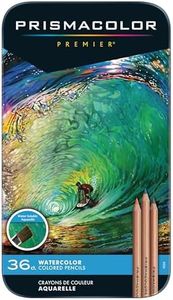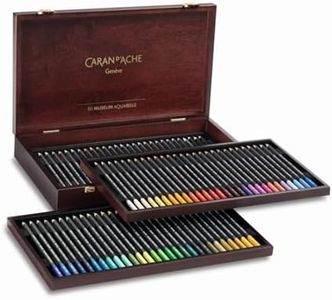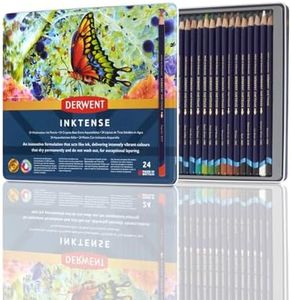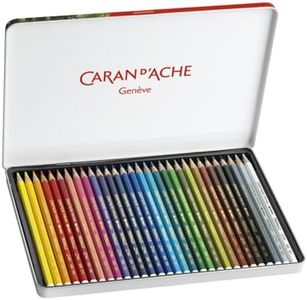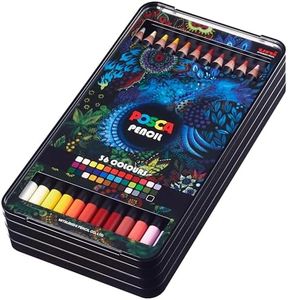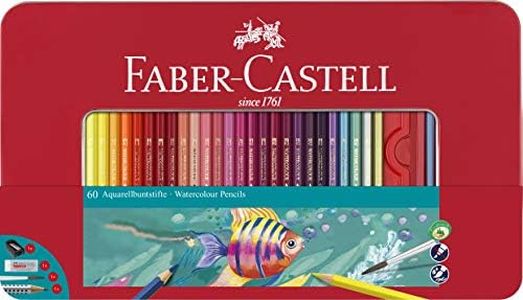We Use CookiesWe use cookies to enhance the security, performance,
functionality and for analytical and promotional activities. By continuing to browse this site you
are agreeing to our privacy policy
10 Best Watercolor Pencils
From leading brands and best sellers available on the web.Buying Guide for the Best Watercolor Pencils
Choosing watercolor pencils can be a fun process that depends on your artistic goals and preferences. Watercolor pencils are unique because they combine the convenience of colored pencils with the blending potential of watercolors. As you look for the perfect set, focus on aspects like color quality, core texture, and how easily the pigment activates with water. Think about how you plan to use them: for sketching, detailed illustrations, professional artwork, or casual coloring. Understanding a few key features can help you pick watercolor pencils that will best suit your creative needs.Pigment QualityPigment quality refers to how vibrant and intense the colors are when you lay them down, both dry and wet. High-quality pigments deliver brighter, richer colors and are more likely to stay true when activated with water. Lower-quality pigments might appear dull or fade quickly. If you want vibrant artwork that stands out or plan to display your pieces, look for pencils noted for strong pigments. For casual use or practice, pencils with so-so pigment might suffice, but you may notice some colors look faded or uneven when blended with water.
LightfastnessLightfastness measures how well the colors resist fading when exposed to light over time. Artworks hung on walls or kept in bright areas benefit from high lightfastness, helping your paintings remain vivid for years. Not all pencils list lightfast ratings, but if your work is for display or sale, opt for those with this information and higher ratings. For sketchbook practice, this is less important, but still nice to have if you want your art to last.
Core Texture and HardnessThe core texture and hardness describe how the pencil feels when it moves across paper. Softer cores lay down color smoothly and are easy to blend, but they wear down faster. Harder cores can be useful for sharp details and controlled lines, but they may not release as much pigment—particularly important when activating with water. If you prefer expressive, bold strokes and rich blends, softer pencils are better. If you like fine lines and detail, lean towards slightly harder ones. Most sets aim for a balance, but knowing your drawing style will help you pick the right feel.
SolubilitySolubility is how well the pencil marks dissolve and blend when touched with water and a brush. Some dissolve completely for a smooth, paint-like look; others leave visible lines even after wetting. For artwork that mimics traditional watercolor or for large washes, look for pencils known for high solubility. If you like maintaining defined pencil marks after adding water (for textures or outlining), you might prefer pencils with moderate solubility.
Color RangeColor range simply refers to how many different colors are included in a set. Larger sets give you more creative options and reduce the need for color mixing, which is helpful for complex or vibrant projects. Artists doing landscapes or portraits might look for specialized color selections. However, a smaller range can be sufficient if you focus on simple sketches or if you enjoy mixing colors yourself. Your project type and how much variety you want in your work should guide this choice.
BlendabilityBlendability is how easily pencils mix with each other, both dry and wet, to create new shades or gradients. Good blendability allows for smooth transitions and creative effects, making your work look more polished. If you plan to layer colors or experiment with gradients and washes, prioritize pencils known for blending well. If you mostly use single colors or draw in blocky styles, blendability may matter less.
Ease of Sharpening and Breaking ResistanceThis refers to how well pencils withstand sharpening and whether their cores resist breaking during normal use. Softer pencils sometimes break easily, especially if dropped. If you’re traveling or tend to press hard, look for pencils known for strong, break-resistant cores and easy sharpening. This saves frustration and keeps your art sessions smooth.
